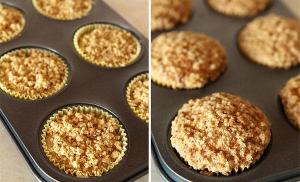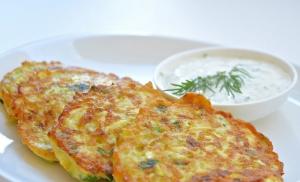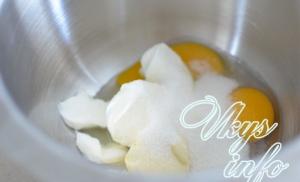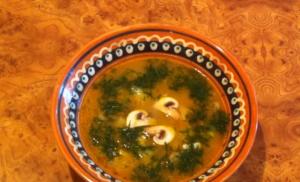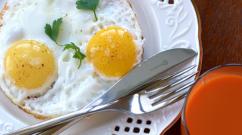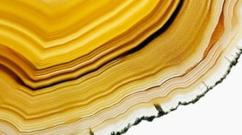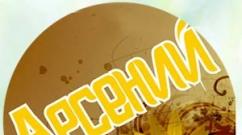Yellow cobweb mushroom beneficial properties. Spider web mushroom - edible
Kira Stoletova
One of the most common types of mushrooms in the temperate zone is the spider web mushroom. It belongs to the conditionally edible class. It is dangerous because there are poisonous varieties.

Appearance
The mushroom got its name because of its white skirt, which falls like a cobweb on the leg. The popular name “Pribolotnik” does not reflect the range of the species, although sometimes it is a marsh fruit. It grows in all types of forests in a variety of soils. This is an autumn variety, with peak growth occurring in late August and early September.
Types of Cobwebs are similar to each other:
- Cylindrical leg with extension downwards.
- Remains of the covering on the stalk.
- A cap with plates, usually conical or flat in shape.
- The pulp is dense and fragrant.
The species of the Cobweb differ in the color of the stem and cap, and the smell of the pulp. Among them there are both edible and poisonous fruits.
Types of mushroom
The class includes about 25 varieties. They differ taste qualities and the degree of safety for humans. Some are listed in the Red Book.
Edible subspecies
The class is represented by the edible cobweb (Plump). It lives in coniferous plantations. The cap is white-gray, watery. The pulp is dense and has a faint mushroom smell. The plates are frequent and adhere to the cap. The edible cobweb is a type of mushroom often found in temperate regions.
The watery blue subspecies is rarely found in Russia.
- The cap is uniformly colored blue-gray, diameter up to 10 cm.
- The smell is unpleasant, musty.
- The taste is fresh.
- There is no tuber-shaped thickening on the stem.
Grows under deciduous trees, often under beech and oak. Growth is often group or colonial. Also, adult individuals lack the remains of the veil.
The triumphal subspecies is also considered edible. But due to its reduced taste, it should be classified as conditionally edible.
Conditionally edible
The difference between this class and edibles is that conditionally edibles require pre-processing. They should not be eaten raw; it is not recommended to eat them fried without prior soaking.
The triumphal cobweb (or yellow) has the following characteristics:
- The cap reaches 7-12 cm in diameter, is brownish in the center and orange-yellow at the edges. The shape is flat or pillow-like. Usually the surface is sticky.
- The pulp has a pleasant smell.
- In young mushrooms, the web completely covers the plates. With age, the plates darken to a brownish color.
- The diameter of the leg is 1 centimeter. Large fruits have a leg up to 3 cm in diameter. Height up to 15 cm.
This subspecies lives in deciduous forests. They find it under birch and oak trees. Often accompanied by milk mushrooms.
The slime cobweb should not be confused with the slimy subspecies. The main difference from other subspecies is the presence of mucus on the cap. It is thick and sometimes even hangs from the uneven edges of the cap. Individuals grow large - up to 12 cm in diameter, the corresponding leg is up to 20 cm in length.

The pulp of the subspecies is odorless and tasteless. Color varies from white to cream. The mushroom is found in conifers and mixed forests.
The slimy cobweb is similar to it. The subspecies forms mycosis with pine plantings. It is also distinguished by the smaller size of the fruiting bodies. The cap is also covered with mucus. It is thinner at the edges than in the center. Color ranges from orange to dark brown. The pulp is white, loose.
The superb cobweb is a little studied subspecies. The diameter of the cap is up to 20 cm. Its feature is appearance hats and legs. In adults, the cap is similar to a bell, rich brown or brown in color. The leg is long, clearly expanding downwards from a cylinder into a cone.
The surface of the fruiting body is soft and velvety. In adult mushrooms, they become wrinkled. A thin purple-gray stripe remains along the edges of the hat. Pulp white or with a hint of blue. It has a pleasant smell and taste. The subspecies bears fruit in large groups, often with birch or beech trees. Prefers deciduous forests.
Bracelet web (red) is distinguished by a red or reddish-brown cap. There is no mucus on it. The pulp has a characteristic musty odor. Prefers damp and mossy places. Found in mycosis with pine or birch trees. The bracelet spider is identified by the bright “bracelets” on the leg and by the scales on the cap.
The purple cobweb received its name because of the peculiarity of its pulp. When cut, it acquires a purple color, but when whole it is bluish or gray. The surface of the cap is sticky. The characteristics of young and adult individuals differ significantly:
- In adults, the cap is flat, slightly concave at the edges. The plates are frequent, with a purple tint. The diameter of the cap is up to 15 cm. The stem is long, with a tuber at the very bottom. The color of the stem is purple, and the cap is olive, brown or brownish with impurities.
- Young individuals have a spherical cap that practically merges with the stem. The leg itself is barrel-shaped.
The blue web spider differs from its fellows in having a whitish leg with a bluish or pinkish tint. The cap is light brown in color and prefers deciduous forests. The musty smell is faint.
The variable cobweb received its name due to the change in color during growth. In adults and mature individuals, the colors of the legs and caps are different. The more common name is multi-colored mushroom. Usually the fruits are small, with an elongated stem.
The cap is brown or golden along the edge and lowered. The plates are light purple. There is a brownish-red stripe on the leg. In old mushrooms, the plates turn pale and turn brown. The leg is usually white or cream in color. The subspecies bears fruit mainly in the south and east in deciduous plantings.
Poisonous subspecies
The poisonous cobweb mushroom is found as often as the edible one. It is precisely because of the abundance dangerous doubles The view does not attract even a knowledgeable mushroom picker.
Inedible spider web – bluish-girdled. It is dangerous because its appearance is practically no different from an edible fruit. Hat with a bump, gray shade with brown. Its lower concave edge has a purple or blue stripe. The pulp is odorless and tasteless. It also forms mycosis with coniferous trees.
Common spiderwort with a brown or golden cap. It has a cone shape, an uneven edge, and mucous. The plates may be uneven. Common cobwebs often have spiral-shaped bands on their legs, which distinguish the poisonous fruit from the edible one.
The beautiful spider web is deadly poisonous; it has a uniform brownish or reddish-orange color. The legs are long, and the caps are cone-shaped with uneven, torn edges. There is a protruding tubercle in the center of the cap. The most beautiful cobweb grows in groups.
Goat's web (or goat's web, stinking) is a bright blue or gray color, sometimes more blue. The peculiarity of the fruit is the chemical smell of acetone or “goat” smell. The hat and leg are the same color. The smell only intensifies with heat treatment. Goat's web grows in the same coniferous and mossy forests.
The lazy cobweb has a characteristic cap color - reddish with crimson splashes. Grows in groups in mycosis with birch and pine. Often the cap and stem are crooked, twisted or broken, with cracks. It is the irregularities and color that distinguish the lazy subspecies from edible mushrooms.

The spider web is shiny with a bright yellow or ocher color. He looks like large subspecies mushroom. The color of the pulp when cut is lemon, does not darken. The plates of adults are greenish. The cap is covered with mucus. The toxin in the pulp acts slowly, so poisoning is not immediately noticeable.
Mountain gossamer (plush, orange-red) - a rare subspecies:
- Outwardly it looks like the most beautiful one, but it deceives with the pleasant smell of radish and good taste.
- The danger of the subspecies is poisoning after 3 days.
- It has a uniform, even color of orange or light brown. The surface is soft and velvety.
Define inedible species It’s not easy, so don’t risk taking a nice-smelling fruit.
The scaly cobweb looks similar to edible species. It is distinguished by its brownish-brown color and dark brown scales on the cap. There is a dark spot in the center. The stalk also has dark brown scales, often at the bottom. The smell is weak but pleasant.
Also considered inedible are:
- chestnut (saffron) subspecies;
- soiling mushroom;
- most elegant;
- filmy;
- very special.
Inedible subspecies destroy the kidneys and cause intoxication of the body.
Beneficial features
They are limited to standard indicators for mushrooms. This is the presence of protein, vitamins and microelements in fruits. They contain more vitamins A and B than fruits and vegetables.
Contraindications
Even edible fruits are contraindicated:
- Pregnant women, the elderly and children under 7-8 years old.
- People with weak stomachs and intestines.
- People with individual intolerance.
You cannot eat edible fruits collected within the city and near busy highways, factories, and the private sector.
Application
Cooking
Edible mushrooms are considered a delicacy; they have a wonderful nutty taste. Tolstushka is delicious fried or stewed with sour cream or cream. Decoctions from Tolstushka are used for broth. Edible fruits They can also be pickled and dried, but this can result in losing much of the flavor.
The excellent cobweb is dried or pickled due to the fact that the conditionally edible fruits are soaked and boiled for a long time. Young specimens are suitable for pickling and pickling. The shiny coating of the crimson subspecies disappears when dried.
Medicine
Used to obtain probiotics and extract valuable microelements. In industry, dyes are extracted from colored fruits. The species cannot be used in home medicine.
The description of the yellow cobweb is very simple: it is a forest mushroom with a cap that looks like half a golden bun. The diameter of the cap is 7-12 cm, its flesh is soft with a pleasant smell. This mushroom tastes best when marinated. There are several ways to marinate.
Yellow cobweb - a forest mushroom with tender and aromatic pulp
- Number of servings: 10
- Cooking time: 20 minutes
Recipe for pickling yellow spiderwort without pre-cooking
The advantage of cobweb is that it does not need to be soaked, so cooking will take a minimum of time. According to this recipe, you do not have to cook the marinade separately, but the mushrooms separately. Everything is prepared together.
How to cook:
- Wash the cobwebs thoroughly to remove sand and debris and cut into several pieces.
- Mix vinegar with water and salt and boil. Place cobwebs in the boiling marinade. Cook them until done. It’s easy to determine if they are ready: they will sink to the bottom of the pan, and the marinade will become almost transparent.
- In 3 min. Until ready, put all the specified spices in the pan.
- Place the finished cobwebs in sterile jars, fill with hot marinade, pour a little into each jar vegetable oil. Close with lids.
Do not use metal lids! Under them, the webs will deteriorate.
Marinated yellow spider web with pre-cooking
Cobwebs according to this recipe are no less tasty. You will need:
- 1 kg of mushrooms;
- 1 liter of water for marinade and 1 liter for cooking;
- 60 g salt + 2 tbsp. l. for cooking;
- 2 s. l. vegetable oil;
- 10 black peppercorns;
- 5 cloves;
- 5 bay leaves;
- 3 star anise;
- 1 tsp. cinnamon;
- 3 cloves of garlic;
- 40 ml vinegar.
Step-by-step cooking instructions:
- Peel the mushrooms, chop them, boil in salted water until tender (they should settle to the bottom of the pan). On average, cooking cobwebs takes no more than 15 minutes. Place them in a colander and let the liquid drain. Place the mushrooms in sterile jars.
- Add salt, peppercorns, cloves, cinnamon, star anise to the water, Bay leaf. Bring this mixture to a boil and simmer over low heat for 30 minutes. Cool, add vinegar.
- Pour the cooled marinade over the mushrooms, place the garlic in the jars and pour in a little olive, sunflower or other vegetable oil. Close the jars with lids and store in a cool place.
The described recipe is suitable not only for cobwebs, but also for other forest mushrooms - saffron milk caps, russula, etc.
Choose the marinating method that seems most convenient to you. In any case, the mushrooms turn out tender, tasty and aromatic.
Throughout the world, spider webs are classified as inedible mushrooms, and only here they are considered conditionally edible. Of the huge variety of spider webs, of which there are about 4 thousand species in the world, about 40 species grow in Russia, and only one or two species can be classified as edible. But since the type of these mushrooms can only be distinguished by a mycologist, the yellow cobweb is called edible, which is considered the most delicious among the entire huge family of cobwebs. The cap of this mushroom has a golden-yellow color, like a triumphal golden wreath, hence another name - triumphal cobweb.
Pickled yellow spiderwort
Pickled spider web mushrooms are considered very tasty. But you need to marinate spider web mushrooms according to proven recipes in order to choose the right healthy mushrooms, thoroughly clean them, prepare them well and boil them correctly. The first step is to thoroughly clean the mushrooms from dirt and needles, then sort them by size. The next step is to clean the internal surfaces of the caps from the plates, since they may contain toxins. Now comes the turn of soaking or soaking. It is necessary to immerse the mushrooms in salted water for an hour to two hours, and then rinse them under a strong stream of water. Older mushrooms, the age of which can be determined by the changed color of the cap, need to be soaked for a day or two in salted water, and during this time the water needs to be changed three to four times.
How to pickle yellow spiderwort
After washing or soaking comes the stage of cleaning the mushrooms. It is necessary to cut the stems and caps into pieces, and to prevent the mushrooms from darkening, place them in salted water, and add a few drops of citric acid for insurance. Pickled cobwebs, the recipe for which can be found in cookbooks(section mushrooms and their processing), they turn out to be very tasty, and according to reviews, the taste is no worse than the famous butter.
Edible spider web mushrooms, how to pickle them
There are several options for pickling spider web mushrooms for the winter. According to the first method, the marinade is prepared without cooking the mushrooms.
To prepare the marinade you need:
- 3 tbsp. spoons of salt, the same amount of sugar;
- peppercorns, teaspoon;
- 4-6 bay leaves;
- three peas of cloves, half a teaspoon of cinnamon;
- a glass of wine vinegar;
- a small bunch of dill;
- 5 onions.
This amount is needed for 2-3 kg of mushrooms. Boil one and a half liters of water, add all the ingredients, cook for 10 minutes, then add salt and sugar, boil for another 10 minutes, add vinegar. Pour the marinade over the mushrooms pre-packed in jars and close. You can use plastic lids. The mushrooms will be ready in one and a half to two weeks. According to the second method, the mushrooms are first boiled and then discarded in a colander, after which everything is mixed, and the mushrooms in the mixture are cooked for up to 15 minutes over low heat. The mushrooms are placed in sterile jars, filled with marinade, and rolled up. Let the pickled mushrooms cool upside down and then place them in a dark place. A week and a half and the mushrooms are ready to eat.
Cobweb is a rare edible mushroom that has a conical or hemispherical cap with a yellow, red, purple or brown color, as well as a dry or slightly slimy stalk, thickened towards the bottom. Cobweb grass is also called “ringed cap” or “white marsh grass”.
Spider webs can grow in soil or wood. Mushrooms are common in mixed and deciduous forests.
Types of spider webs
The spiderweb family has about 400 species of fungi. Externally, all species differ from each other in color and shape of the cap, the structure of the stem, but they also have one general similarity. All young spider webs have a veil-like film that connects the cap and stem of the mushroom. This is, in fact, where the name of this family came from. It seems that each mushroom is covered with a cobweb.
In more mature spider webs, the film stretches and breaks into separate threads: they begin to hang down or remain glued to the stem. In old mushrooms with a straightened cap, there are no threads at all, and only a ring remains of the film.
Among the mushrooms of this family there are both deadly poisonous and edible ones.
Edible mushrooms: yellow cobweb, straight, watery blue cobweb, sparkling cobweb, violet, scaly, bracelet cobweb, superb cobweb.
Poisonous ones include: red cobweb, broken cobweb.
TO conditionally edible mushrooms can be attributed to: camphor webwort and goat's webwort, anise webwort, thick-fleshy webwort.
How to cook spider web
Like all edible mushrooms, spiderwort can be boiled, pickled, fried, salted, baked and dried. However, the taste of the final dish will depend on what type of spider web you are preparing.
Thus, yellow spiderwort is used mainly in salted form. Mushrooms are often dried, but then they should be cut into thin slices.
Straight cobweb can be boiled, baked, salted and pickled. Purple mushrooms and semi-sparkling webweed are also adapted to any type of heat treatment.
The dove-blue cobweb has low taste, but after prolonged boiling it can be used for pickling, salting and preparing main courses.
Scaly webwort should be used for food only in boiled form.
Bracelet webwort can be fried, stewed, pickled, salted and dried. However, during drying and in marinades, the mushroom turns black.
The excellent cobweb is eaten salted and boiled. This type is ideal for drying.
It is no secret that the growth of wisdom teeth is a very painful process. Should it be removed? We invite you to learn more about the features of wisdom teeth removal.
Edible cobweb is a mushroom of the Cobweb family, genus Cobweb. These mushrooms, as the name suggests, can be eaten.
The Latin name of the mushroom is Cortinarius esculentus.
Description of the edible cobweb
The diameter of the cap is 5-8 centimeters. The cap is dense, fleshy, its edges are turned inward, over time it becomes flat-convex and can even take on a depressed shape. The surface of the cap is watery and smooth. The color is grayish-white.
The plates are often located, wide, adherent to the stem. The color of the plates is clayey. The pulp is thick, dense, white, and has a pleasant mushroom smell. Spore powder is yellow-brown in color. The size of the spores is 9-12×6-8 microns, their shape is ellipsoidal, the surface is warty, the color is yellow-brown.
The leg of the edible cobweb is dense and smooth. The color of the leg is whitish-brown. In its central part there are remnants of a cobweb pattern, which disappear over time. The length of the leg is small - 2-3 centimeters, and the diameter is 1.5-2 centimeters.
Habitat of growth and fruiting time of edible cobwebs
These mushrooms are common in the European part of our country, and they are also found in the forests of Belarus. You can find them in coniferous forests. These mushrooms bear fruit from September to October.
Evaluation of the taste characteristics of edible spider webs
The spider web is edible and suitable for consumption. These mushrooms have a sweetish taste, in addition, they have a pleasant mushroom smell.

Other mushrooms of this genus
The excellent cobweb has a cap diameter of 10-20 centimeters. IN at a young age the shape of the caps is hemispherical, but as the fruiting bodies mature, they become flat and even depressed. The surface of the cap is velvety. Adult mushrooms are almost purple, wine, and red-brown in color. The length of the leg is 10-14 centimeters, with a thickness of 2-5 centimeters. The color of the leg can be pale purple, light ocher or whitish.
Superb cobwebs are rare; in many European countries they are listed in the Red Book. This species does not grow in our country. Excellent cobwebs settle numerous groups. They grow in deciduous and mixed forests. They bear fruit from August to September. They can often be found near birch trees. Although superb, spiderweb is a little-studied mushroom, but it is edible and suitable for drying and pickling.
The scarlet cobweb has a cap with a diameter of up to 15 centimeters, and the height of its stem is 6-8 centimeters. The shape of the cap changes from convex to flat as the fruiting body grows. The cap is sticky to the touch. The color of the cap varies from brown-olive to red-brown.

Information about the edibility of scarlet cobwebs is contradictory, since their nutritional properties have been poorly studied.
The anomalous cobweb is characterized by a convex cap shape, but over time it changes to a flat one. The color of the cap is initially gray or gray-brown, and the edges are bluish-violet, but gradually the color of the cap changes to red-brown. The length of the leg is 7-10 centimeters, with a diameter of 0.5-1 centimeter. The color of the leg is whitish with a lilac or brown tint. Light fibrous remains of the bedspread are visible on the surface of the leg.
Anomalous cobwebs grow in small colonies, and they can also be found singly. They choose coniferous and deciduous forests and grow in the ground or on a litter of leaves or needles. They bear fruit from August to September. Anomalous spider webs are widespread in Germany, Austria, Sweden, France, Switzerland, Estonia and Belarus.
They also grow in the USA and Morocco. In our country they are found in Irkutsk, Amur, Tver, Chelyabinsk and Yaroslavl regions, and in the Khabarovsk and Krasnoyarsk territories. Nutritional properties Anomalous cobwebs have not been studied enough, but scientists classify these mushrooms as inedible.

